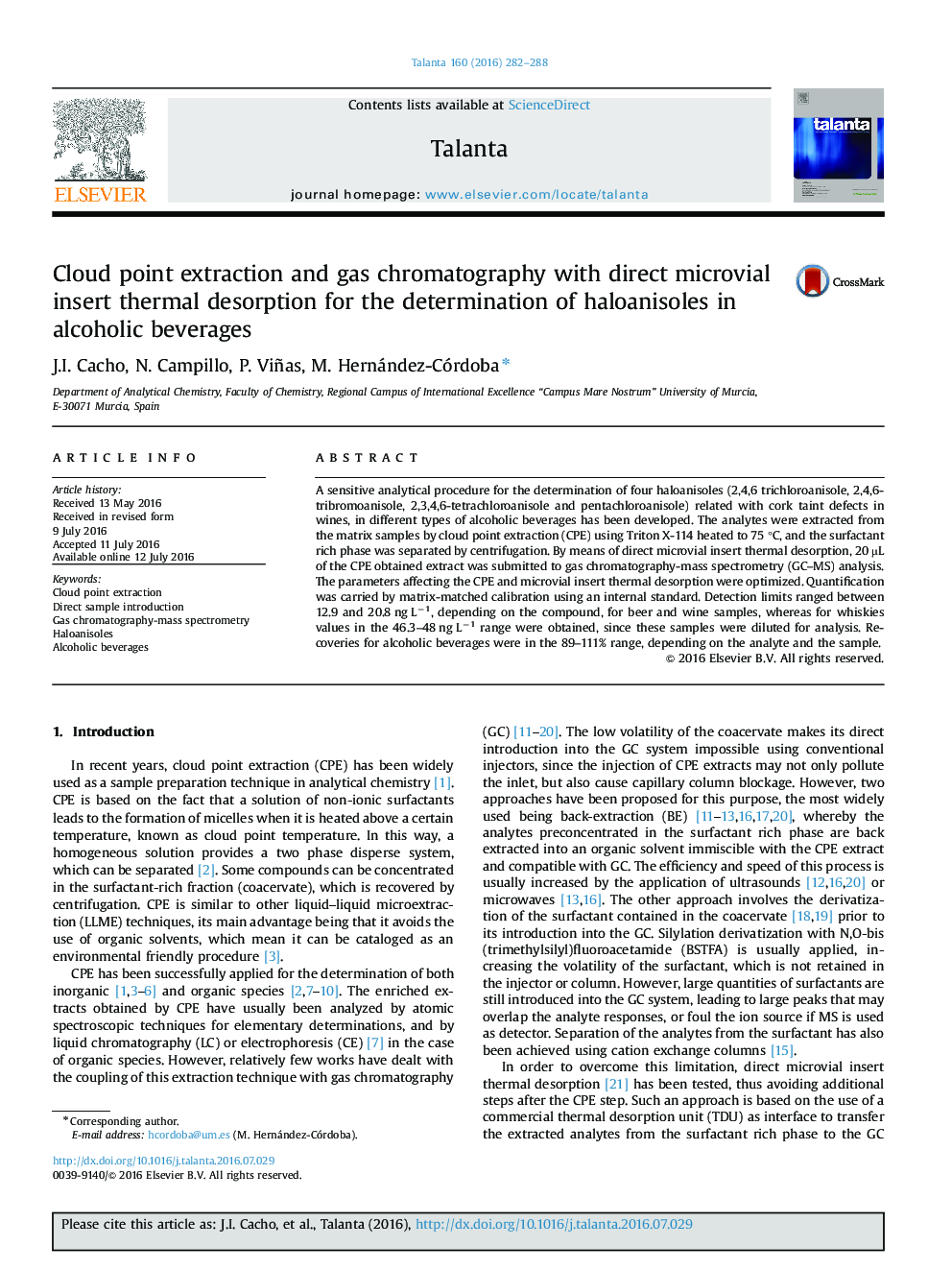| Article ID | Journal | Published Year | Pages | File Type |
|---|---|---|---|---|
| 1243259 | Talanta | 2016 | 7 Pages |
•A green sample treatment is developed to analyse the presence of haloanisoles.•CPE has demonstrated good capability to extract four haloanisole compounds.•Direct microvial insert thermal desorption allows the direct GC analysis of CPE extracts.
A sensitive analytical procedure for the determination of four haloanisoles (2,4,6 trichloroanisole, 2,4,6-tribromoanisole, 2,3,4,6-tetrachloroanisole and pentachloroanisole) related with cork taint defects in wines, in different types of alcoholic beverages has been developed. The analytes were extracted from the matrix samples by cloud point extraction (CPE) using Triton X-114 heated to 75 °C, and the surfactant rich phase was separated by centrifugation. By means of direct microvial insert thermal desorption, 20 µL of the CPE obtained extract was submitted to gas chromatography-mass spectrometry (GC–MS) analysis. The parameters affecting the CPE and microvial insert thermal desorption were optimized. Quantification was carried by matrix-matched calibration using an internal standard. Detection limits ranged between 12.9 and 20.8 ng L−1, depending on the compound, for beer and wine samples, whereas for whiskies values in the 46.3–48 ng L−1 range were obtained, since these samples were diluted for analysis. Recoveries for alcoholic beverages were in the 89–111% range, depending on the analyte and the sample.
Graphical abstractFigure optionsDownload full-size imageDownload as PowerPoint slide
